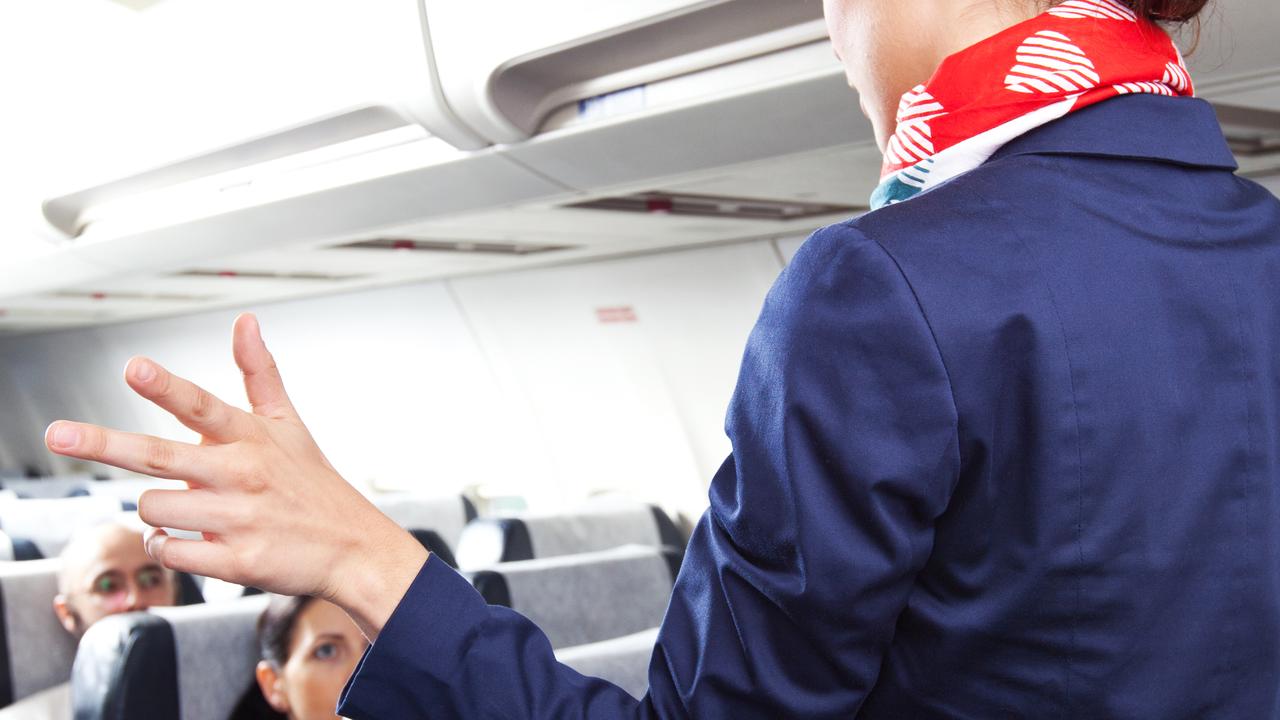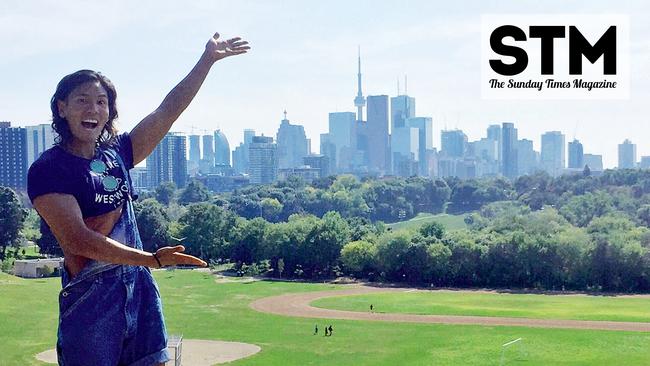Mt Rushmore's stony silence
CLIMBING the majestic Mt Rushmore is prohibited so when Tony Perrottet receives an offer to "summit" the iconic presidential heads, he is there in a flash.

BLAME it on Cary Grant: the climactic chase in Alfred Hitchcock's 1959 thriller North by Northwest, when he and Eva Marie Saint are pursued by communist villains across the famous faces of Mt Rushmore, is one of the indelible pop culture images of America.
The scene was shot on a Hollywood studio set, but today the first question that occurs to even the least adventurous visitor to South Dakota is not why the Pharaonic monument was carved, or even how, but: How do I climb up there?
It's not such a sacrilegious question. In his original vision in the 1930s, sculptor Gutzon Borglum had conceived of a grandiose stone stairway for the public leading up to the presidential heads, along with a giant carved tablet that recounted in heroic terms the first 150 years of US history, but his plan was shelved when he ran out of time, money and good granite to carve. Since work ended in 1941, climbing the patriotic memorial has been officially prohibited. Which is why an invitation from the park superintendent to "summit" Mt Rushmore with a "VIP group" is not something I can turn down. So, early one crystal August morning, led by clean-cut park ranger Darin Oestmann, I join five other lucky hikers setting off from the visitors centre along a trail through the sweetly scented ponderosa forest in the Black Hills, the oldest mountains in the US.
My fellow VIPs are members of a barbershop quartet from nearby Rapid City, a cheery bunch of retirees in biker jackets and baseball caps, as well as their manager and his wife, who are scheduled to perform at Mt Rushmore's evening sound and light show, and want to harmonise patriotic American songs on the presidents' heads. Although they seem a bit nonplussed an Australian doesn't know the lyrics, they are willing to accept an outsider on the jaunt.
So we proceed through the forest in silence, listening to birdsong and the cracking of twigs by passing goats, a little taken aback by the tangible evidence of history scattered along the path: rusting nails, wires and lengths of the original air compression pipes used by the 400 or so local labourers who from 1927 to 1941 followed this route, by wooden stairs and winch cart, on their Promethean task. Oestmann pauses on the trail to point out a rarely seen view of George Washington's profile gleaming in the golden morning light. Mt Rushmore has not looked so good for more than six decades.
In 2005, a German cleaning company gave the four presidents their first hi-tech facelift, using 60C water blasted through hydraulic hoses. Sixty-four years of dirt and lichens fell from the memorial, including mushroom-like fungi more than 7cm thick. "Now the faces are whiter and a lot shinier," says Oestmann, who was involved in cleaning "about three-quarters" of the first president. "You see that dot in Washington's left eyelid?" He points to a broken drill bit stuck in the stone. "You couldn't see that before."
This is definitely not a manicured tourist path. We scramble up a few steep boulders, slip between pine branches near mountains of rubble, then pass the high-security wire fence that keeps al-Qa'ida out. Steep metal steps rise into a granite crevice until directly behind the presidential heads the sun reveals a carved opening in the heart of the rock. It's an oblong sliver, like the entrance to the tombs in Egypt's Valley of the Kings. This is what would have been the Hall of Records, a vault Borglum planned as a repository for the Declaration of Independence and other key American artefacts. Worried that future generations might find Mt Rushmore as enigmatic as Stonehenge, the sculptor also wanted information stored on the four presidents – Washington, Abraham Lincoln, Thomas Jefferson and Theodore Roosevelt – as well as an explanation of how the memorial was built and, frankly, why. The vault was never finished; it's an ever-narrowing passage that extends about 25m into the rock, and we run our fingers over granite walls still honeycombed with drill marks.
But the climax is yet to come. Oestmann leads us up the last steep stairway and we burst from the shadows into a brilliant blue South Dakota sky – on top of Washington's head, no less – 200m above the visitors' centre and 1700m above sea level. As I wander jelly-kneed over to the brilliant white (and, thankfully, relatively flat) pates of Jefferson and Lincoln, the sense of space is exhilarating: our view across the craggy, pine-covered Black Hills seems endless.
In August 1925, the first time he climbed the raw cliffs of Mt Rushmore to survey its artistic potential, this vista must have been particularly impressive to Borglum. At the time he was the US's top sculptor, an overbearing, obsessive character who was looking for a grandiose project to confirm his place in history. Back then, this corner of the west was in the middle of nowhere; Borglum had never been anywhere near South Dakota. That summer, travelling with forest guides from the State Game Lodge and his son, Lincoln, sporting a Stetson and a cigar, Borglum gazed out on the Black Hills and seemed, if just for a moment, humbled by his undertaking. "I was conscious we were in another world," Borglum wrote of that moment. "We looked out over a horizon level and beaten like the rim of a great cartwheel 2000 feet (600m) below. We had reached upward towards the heavenly bodies and it came over me in an almost terrifying manner that I had never sensed (the scale of) what I was planning."
The 57-year-old artist was contemplating an artwork bigger than the ancient Colossus of Rhodes, on a site that could be reached only on foot. The story of Borglum's 14 years at the monument, wrestling with nature, bureaucracy and failing health, has gone down in American legend. (The sculptor died in 1941 from complications after minor surgery and work ceased on the memorial prematurely; the finishing touches were later directed by his son just before the US entered World War II.)
We stand amid the winches and snakes of cable, peering nervously down on the 18m-high heads below, as if these tools are a secret memorial to Borglum. Left in perpetuity, they provide a window to the moment it all began, when nobody, not even the artist himself, knew if the project might end in humiliating failure.
Oestmann points out the red plotting points inscribed around Lincoln's eyes and the green numbers written along his hairline – newly visible since the memorial's cleaning – and offers to take my photograph perched on Jefferson. "Don't go any further back," he warns, as I manoeuvre cautiously into position. "That's a sheer drop."
With my back to Washington's head, I find each member of the barbershop quartet humbly down on one knee, and they break into This is My Country as the video camera rolls. It is a grandly theatrical scene, at once patriotic, Fellini-esque and quintessentially Rushmore. After all, Borglum was a consummate showman who orchestrated many inaugurations, pageants and presidential visits to raise funds for the monument.
For Native Americans, Mt Rushmore has an entirely different set of meanings, since it was carved in the heart of the most bitterly contested landscape in the western US. Indeed, their foremost cinematic reference for the monument is less North by Northwest than Skins, a harsh account of reservation life directed by a Lakota, Chris Eyres, in 2002. Its climactic scene depicts a modern Native American protagonist, the disillusioned tribal policeman Rudy Yellow Lodge (played by Eric Schweig), climbing Mt Rushmore and tossing a can of red paint down Washington's face, leaving a trail like a teardrop of blood.
Mt Rushmore may seem the most solid of the historic monuments in the US. What can really change through the decades on those stone faces, which seem to gaze down indifferently on the follies of their countrymen? Quite a lot, as it happens, especially since 2004, when the first Native American superintendent, Gerard Baker, was appointed. Baker is of the Hidatsa-Mandan tribe, a towering, gregarious figure who wears his hair in braids. He quickly began to broaden the cultural programs and lectures at the monument. Two years ago, visitors could learn nothing about Rushmore's pre-white history; they would leave having no idea why it aroused such bitterness among so many Native Americans.
"A lot of Indian people all over America look at Mt Rushmore as a symbol of what white people did to this country when they arrived," Baker tells me in his park office. "They took the land from the Indians and desecrated it." Indeed, Borglum's "shrine of democracy" was erected on the site of one of the country's harshest injustices. The entire Black Hills were (and remain) a sacred landscape to the Lakota people known as Paha Sapa, "the heart of everything that is".
Under the 1868 Treaty of Fort Laramie, the US Congress confirmed an earlier promise that the area would remain inviolate as the core of the Greater Sioux Reservation. But, in 1874, rumours of gold in the mountains led to a military reconnaissance being sent into the Black Hills under lieutenant-colonel George Armstrong Custer. The soldiers were unexpectedly bewitched by the beauty of the Black Hills, the pine-filled valleys of which form a verdant oasis in the dry Great Plains.
Crusty cavalrymen would lean down from their horses and pluck bouquets of wildflowers; officers enjoyed champagne suppers with wild gooseberries while the enlisted men played baseball. But for the Lakota families who watched the expedition from the surrounding mountains, the expedition foretold disaster. Custer's prospectors discovered gold in the mountain streams and, within weeks of the news arriving in Cheyenne, a rush to the Black Hills was on, with Deadwood as one of the first illegal settlements.
President Ulysses S. Grant sent envoys to buy the Black Hills, but the Lakota refused to bargain: Sitting Bull said he would not sell even a pinch of dust. In the war that broke out in 1876, many of the Seventh cavalrymen, including Custer, lost their lives at Little Bighorn. But the Lakota were soon defeated and in 1877 Congress passed an act obliging them to sell the Black Hills and move to reservations. When Borglum came to the Black Hills 50 years later, these events were a distant memory for white settlers. The Rushmore project faced some opposition from local environmentalists, who felt it defiled the pristine western landscape, but nobody considered Native Americans might take it as a pointed insult.
TO get a sense of the emotional level, I visit the Defenders of the Black Hills, a Native American group that meets regularly in Rapid City. When I explain to the dozen men and women there – mostly Lakota, but also Ponca and Northern Cheyenne – that I'm writing about Mt Rushmore, the room fills with laughter. "Tell your readers we'd like to blow it up!" is the typical response. The co-ordinator, Charmaine Whiteface of the Oglala Lakota, explains, "We hate Mt Rushmore. It's a sacred mountain that has been desecrated. It's like a slap in the face to us, salt in the wounds ... as if a statue of Adolf Hitler were put up in the middle of Jerusalem."
She gives me a badge: The Black Hills Are Not For Sale. It's a reference to the 1980 court ruling that awarded the Sioux $106 million compensation for the loss of the Hills. The Lakota have refused to touch the money, which has grown to more than $500 million in the bank, even though their communities remain desperately poor.
The Defenders' main focus is the litany of environmental affronts that are still scarring their sacred lands, from abandoned uranium mines to a planned bikers' bar on a sacred prayer site. In this context, Mt Rushmore is reviled as a symbol of how non-indigenous people treat the western landscape, summing up all that has gone wrong for Native Americans in the past 130 years.
Whiteface wrote an editorial in the Rapid City Journal against Baker accepting the appointment at the memorial. "My personal feeling is that when they put a Native American person up there as superintendent, then it appears as if we approve of Mt Rushmore," she wrote.
When I mention this to Baker, he laughs. Naturally, he has to stay above the political fray. "The bottom line is, this place was stolen from the Lakota. That's a historic fact ... but we're here at Mt Rushmore to educate.



